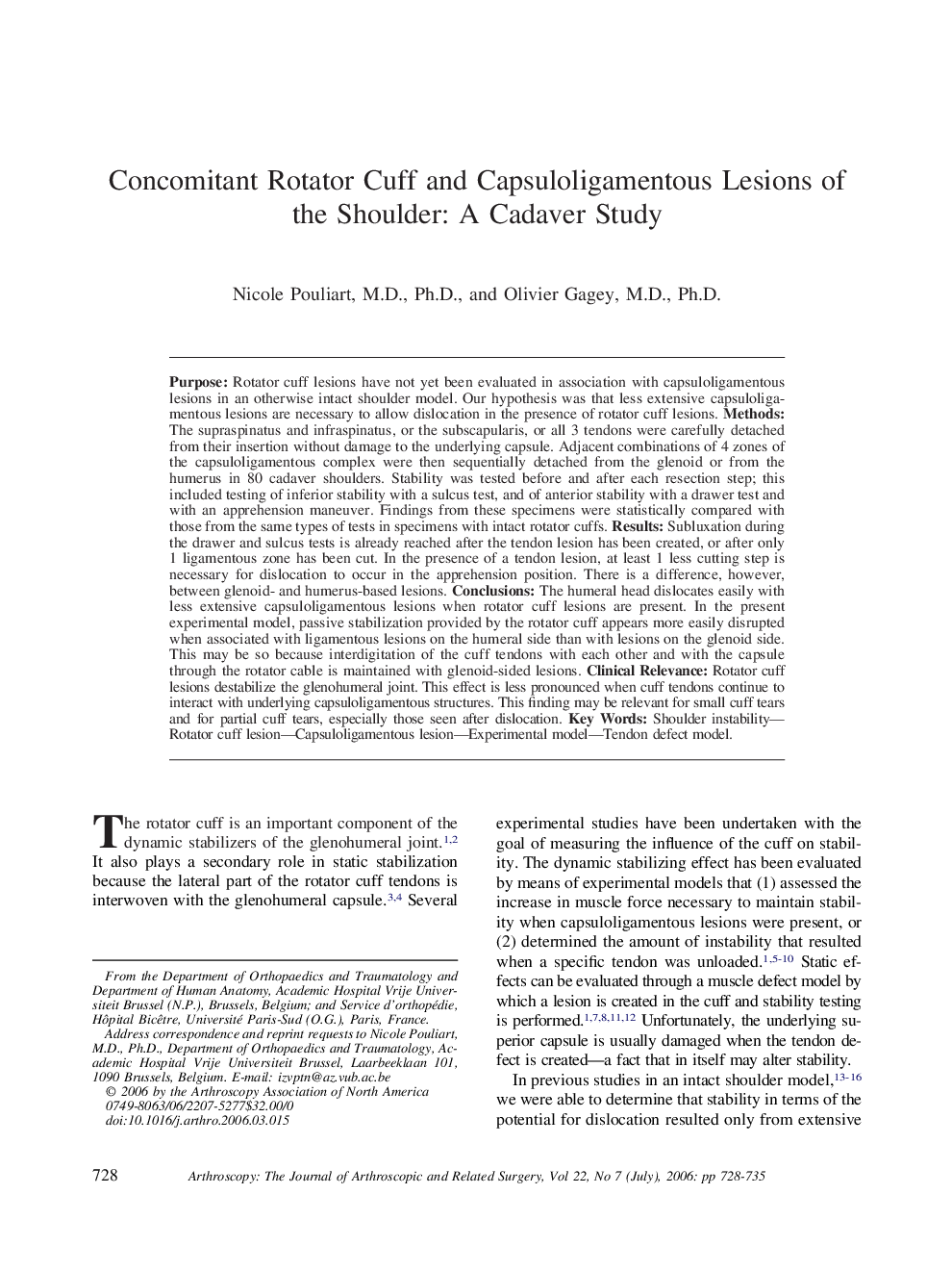| کد مقاله | کد نشریه | سال انتشار | مقاله انگلیسی | نسخه تمام متن |
|---|---|---|---|---|
| 4047695 | 1603608 | 2006 | 8 صفحه PDF | دانلود رایگان |

Purpose: Rotator cuff lesions have not yet been evaluated in association with capsuloligamentous lesions in an otherwise intact shoulder model. Our hypothesis was that less extensive capsuloligamentous lesions are necessary to allow dislocation in the presence of rotator cuff lesions. Methods: The supraspinatus and infraspinatus, or the subscapularis, or all 3 tendons were carefully detached from their insertion without damage to the underlying capsule. Adjacent combinations of 4 zones of the capsuloligamentous complex were then sequentially detached from the glenoid or from the humerus in 80 cadaver shoulders. Stability was tested before and after each resection step; this included testing of inferior stability with a sulcus test, and of anterior stability with a drawer test and with an apprehension maneuver. Findings from these specimens were statistically compared with those from the same types of tests in specimens with intact rotator cuffs. Results: Subluxation during the drawer and sulcus tests is already reached after the tendon lesion has been created, or after only 1 ligamentous zone has been cut. In the presence of a tendon lesion, at least 1 less cutting step is necessary for dislocation to occur in the apprehension position. There is a difference, however, between glenoid- and humerus-based lesions. Conclusions: The humeral head dislocates easily with less extensive capsuloligamentous lesions when rotator cuff lesions are present. In the present experimental model, passive stabilization provided by the rotator cuff appears more easily disrupted when associated with ligamentous lesions on the humeral side than with lesions on the glenoid side. This may be so because interdigitation of the cuff tendons with each other and with the capsule through the rotator cable is maintained with glenoid-sided lesions. Clinical Relevance: Rotator cuff lesions destabilize the glenohumeral joint. This effect is less pronounced when cuff tendons continue to interact with underlying capsuloligamentous structures. This finding may be relevant for small cuff tears and for partial cuff tears, especially those seen after dislocation.
Journal: Arthroscopy: The Journal of Arthroscopic & Related Surgery - Volume 22, Issue 7, July 2006, Pages 728–735